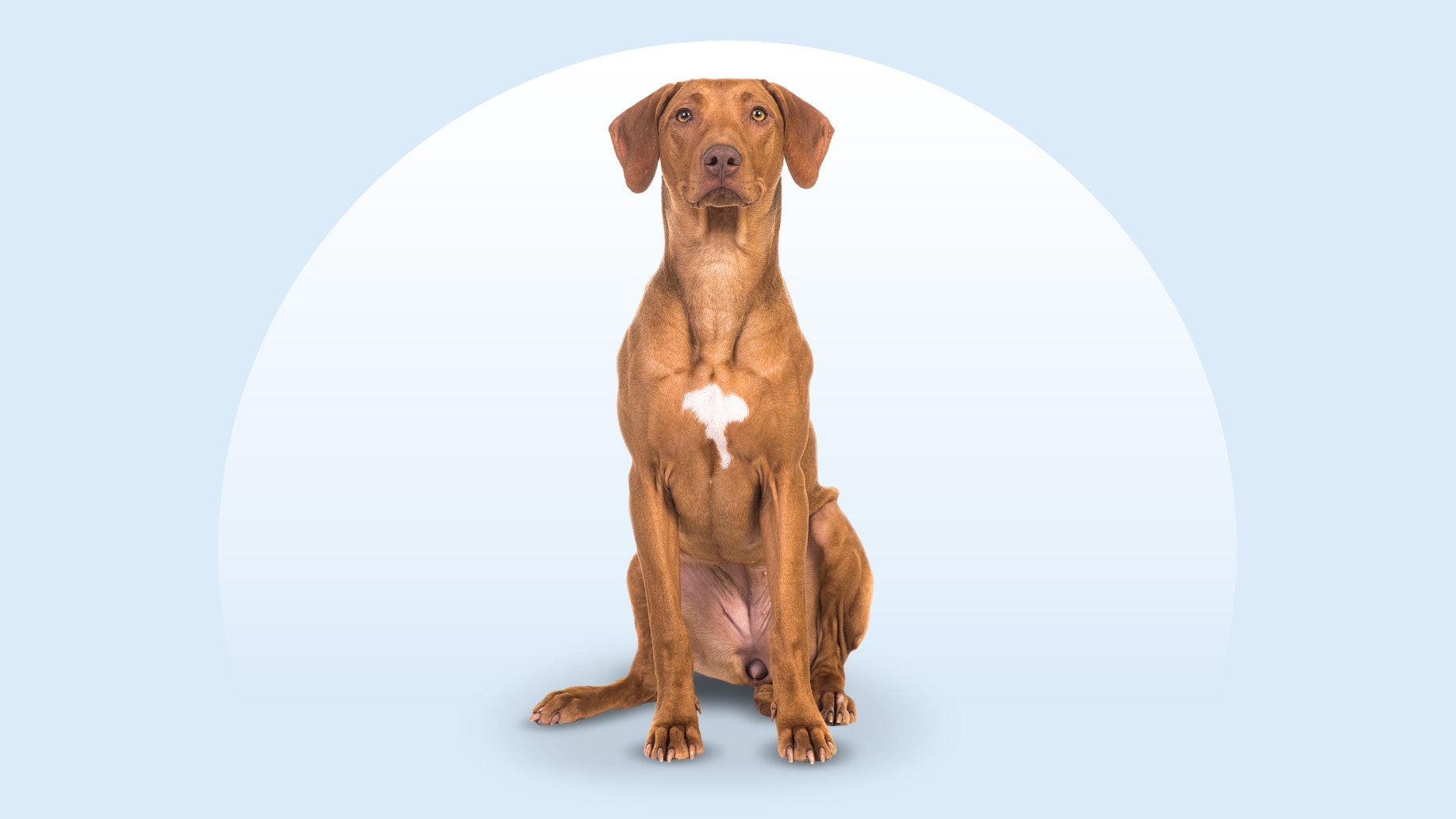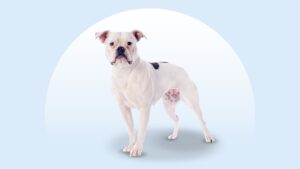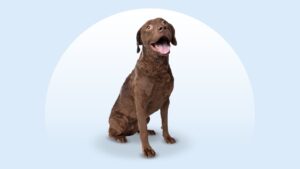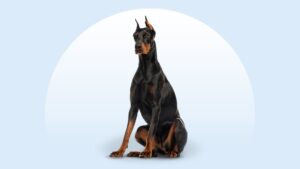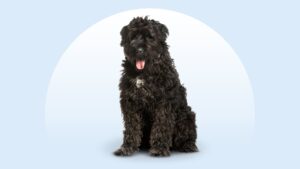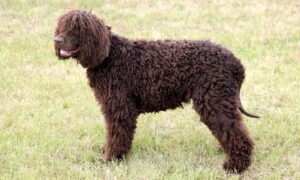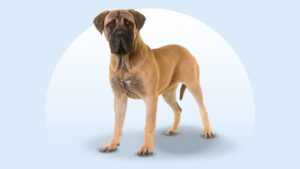Rhodesian Ridgeback
Updated December 15, 2025
Rhodesian Ridgeback
Updated December 15, 2025
If your ideal weekend involves a hike, a run, and time curled up on the couch, look no further: The Rhodesian Ridgeback would be delighted to call your place home. These active, friendly pups have a dignified air and an affectionate side reserved just for their favorite person (that’s you).
Athletic, Loyal, Snuggly
70–85 pounds
24–27 inches
10–12 years
Wheaten, Light Wheaten, Light Wheaten Black Nose, Light Wheaten Brown Nose, Red Wheaten, Red Wheaten Black Nose, Red Wheaten Brown Nose, Wheaten Black Nose, Wheaten Brown Nose
Well, this is awkward, but that huge pup trying to lick your face and give you cuddles was originally bred to hunt … lions.
Thankfully, your backyard probably isn’t a safari, and the affectionate Rhodesian Ridgeback has moved on from whatever their ancestors were up to. Nowadays, these athletic, friendly pups make great hiking or running companions, and they’ll politely slow down so you can keep up with them.
Rhodesian Ridgebacks will also surprise you with their delightfully mushy side, sidling up to you on the sofa to enjoy a film together; it’s OK to share the tiniest bit of popcorn just to say you love them.
Rhodesian Ridgeback Characteristics
Rhodesian Ridgeback Appearance
The Rhodesian Ridgeback dog has a unique ridge of backward-growing hair down the length of their back (hence their rather cool name). Softies at heart, their round, sparkling eyes often swell with emotion at cuddle time. Their signature color is wheaten, varying from pale brown to deep, reddish brown.
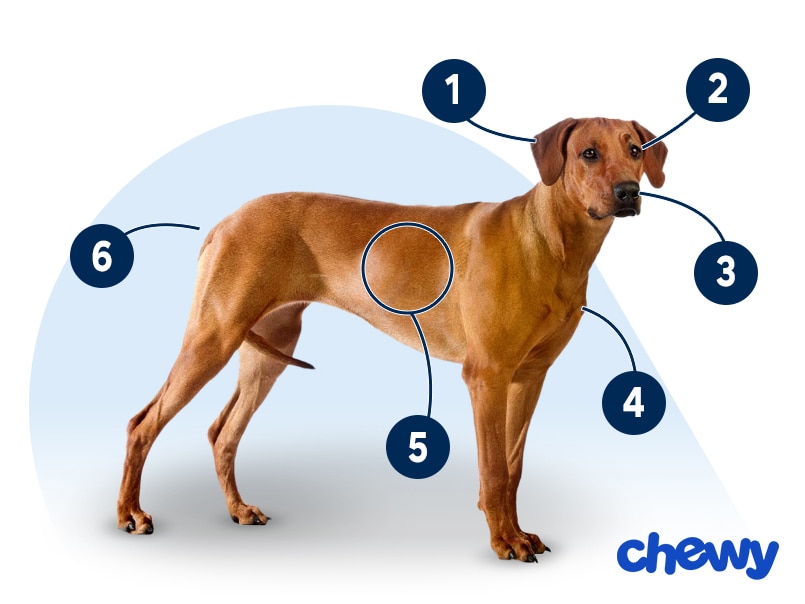
- Ears
Rhodesian Ridgebacks have medium-sized ears that are wide at the base and taper to a rounded end. Their ears fold over and are close to the head.
- Eyes
They have round, intelligent-looking eyes that are set well apart. Eye color tends to complement the color of the dog’s nose, so it can range from amber to dark.
- Nose
Rhodesian Ridgebacks typically have black or liver (reddish-brown) noses, though brown is also possible.
- Coat Length
Their coat is short and dense with a subtly glossy sheen and a distinctive ridge of backward-growing hair down the spine.
- Coat Color
Their coat is always a wheaten shade. It might look like one color from afar, but up close, it’s more like bands of colors mixed. These can range from pale browns to reddish browns, and these dogs sometimes have a patch of white on their chest or toes, too.
- Tail
The Rhodesian Ridgeback’s tail is tapered and carried with a slight upward curve.
Rhodesian Ridgeback Temperament
Rhodesian Ridgebacks have a dignified, calm stare, but that casual elegance doesn’t mean they don’t like to let loose.
These energetic, active pups love a good challenge and can’t wait to go on a new adventure, whether it’s hiking or just a run around the neighborhood. They may do best with an experienced pet parent who knows how to make life an obstacle course.
As incredibly smart dogs, Rhodesians are also silly and friendly with people they know well. Your dog’s goofy side is more likely to come out with you around, and they’ll probably be more reserved with strangers. Socializing them at an early age can help them come out of their shell a bit.
Your faithful pup will love having a family with older kids who know how to play calmly and respectfully.
A Rhodesian Ridgeback will probably think of themselves as your vigilant hero, so they may bark to signal the arrival of every single person delivering packages. But this is, at its heart, a kind gesture. And if it gets to be too much, a certified dog trainer who uses positive reinforcement can help calm their tendency to announce each guest.
Adorably, Rhodesians are intuitive pups, and they’ll likely be gentle with older adults and little kids. Of course, they should always be supervised with the latter, if only because they could inadvertently knock a tiny child over because of their big size.
How to Care for a Rhodesian Ridgeback
A Rhodesian Ridgeback is athletic, so regular exercise and consistent training are nonnegotiables to ensure your dog is happy and expending all their energy.
They don’t require a ton of grooming, but they will appreciate quality time and snuggles with their favorite person.
Grooming
Training
Diet
Exercise
Environment
Rhodesian Ridgeback Health
The average Rhodesian Ridgeback lifespan is 10–12 years. Here are some health issues to be aware of.
- Bloat and gastric dilatation-volvulus (GDV): Rhodesian Ridgebacks, like many deep-chested breeds, are prone to a life-threatening condition called bloat. It occurs when the stomach gets distended with air and/or food. A serious complication of bloat is when the stomach twists on itself, cutting off blood supply to the organs. This is called GDV, and symptoms include abdominal distension, restlessness, and dry heaving. If you notice these signs, go to the vet immediately.
- To avoid bloat, use a slow feeder and feed your dog smaller meals throughout the day instead of one big dinner. Keep their food bowls on the ground (don’t elevate them!) and don’t let your Ridgeback exercise for two hours before or after eating.
- Dermoid sinus: Most common in Rhodesian Ridgebacks, dermoid sinus is a congenital skin defect caused by the skin not separating from the nervous system during development. It presents at a young age as a small opening on the back or neck, and sometimes you can feel a cord underneath. Some cases may be managed with gentle cleansing, but severe ones can lead to neurological issues and require surgery.
- Elbow and hip dysplasia: Elbow and hip dysplasia are genetic conditions where the joints don’t align well and become looser than normal. Treatment might involve weight loss, reduced activity, joint supplements, physical therapy, or, in severe cases, surgery.
- Epilepsy: Epilepsy is a seizure disorder that typically starts in dogs between 6 months and 5 years of age. While it can be managed with medication, there’s no cure. That said, affected dogs can still lead a long and happy life.
- Food-induced atopic dermatitis: Rhodesian Ridgebacks may have allergies to things in their environment as well as allergies to specific foods, and those can trigger skin issues. See a vet if your dog develops redness, itching, or any other skin abnormalities; scratching may also be a symptom.
- Hypothyroidism: Hypothyroidism includes symptoms like lethargy, hair loss, ear and skin infections, and weight gain. A blood test can diagnosis it, and treatment is a daily oral medication.
Rhodesian Ridgeback History
On a very awkward note, your loving family dog had ancestors who chased … lions. It’s hard to imagine, but it’s true.
The Rhodesian Ridgeback dog breed traces its origins to the African country of Rhodesia, now known as Zimbabwe.
These pups were the result of crossbreeding a South African Khoikhoi tribe hunting dog with other breeds like Greyhounds and various terriers, which had been brought to the country by Dutch colonists. Rhodesian Ridgebacks soon became experts at navigating the African terrain.
They became hunting dogs when a hunter named Cornelius van Rooyen introduced two Rhodesian Ridgebacks into his pack of lion dogs in the late 19th century. Not only did they track lions, but they also scared off baboons and leopards.
The Rhodesian Ridgeback was recognized by the American Kennel Club in 1955. Rhodesian Ridgeback breeders tend to charge between $700–$2,000 for a puppy. If you choose this route, pick a responsible breeder.
You can also consider a Rhodesian Ridgeback for adoption, as there are many of these pups waiting for their forever homes. Look for a local Rhodesian Ridgeback rescue, like Ridgeback Rescue of the U.S.; keep an eye out for the breed at your local animal shelter, or search Chewy’s database of adoptable dogs in your area.
